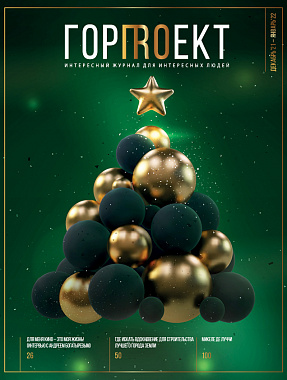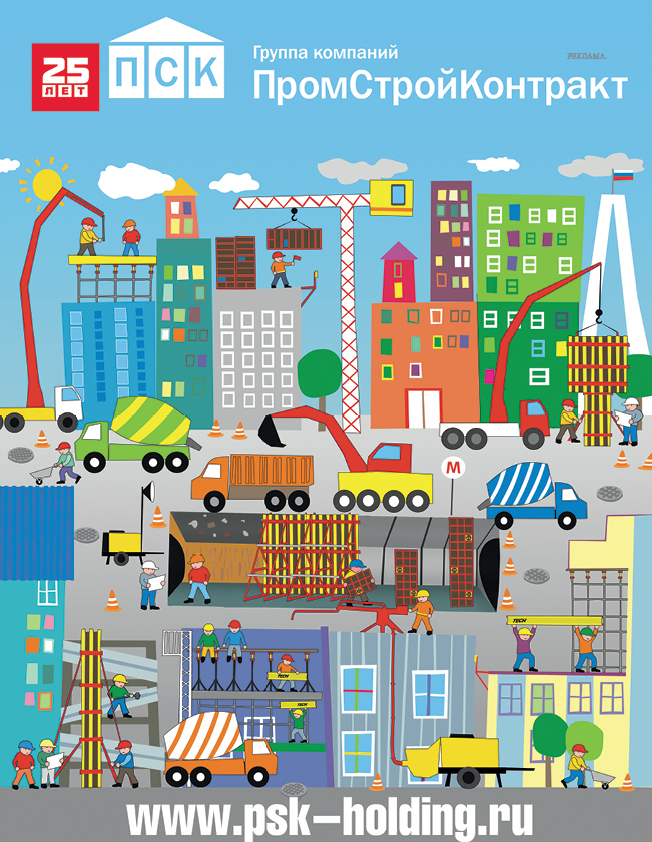In the second half of 2020, many Russians felt themselves in the place of Pushkin, who, as you know, always preferred domestic tourism for a number of reasons. In 1833, while Karl Bryullov was finishing his most famous painting in Rome, the torch of Russian poetry described his plans for the velvet season as follows: “This is how I dispose of my future. In the summer, after the birth of my wife, I send her to the Kaluga village to my sisters, and I myself will go to Nizhny, and maybe to Astrakhan ... I need a trip morally and physically. Almost two centuries later, many people, exhausted by quarantines and a harsh informational agenda, also need to travel. It would seem that Crimea and Tanzania, and really luxurious London and Istanbul (it was no coincidence that articles about them were published in recent issues of the Gorproekt magazine) , and the resorts of the Krasnodar Territory - what more could you want.
But experts note that Russian consumers of travel, so necessary, according to the apt word of the classic, to save the mind and just relax, have long become more selective. The union of local urbanists and the construction sector played a significant role here, which revealed the potential of many places. There are even more plans - a short review of them was collected by the special correspondent of the Gorproekt magazine Maxim Kirsanov.
Tourism industry disaster of 2020
It is difficult to find an industry that has suffered more in 2020 than tourism. The closure of many countries, including Spain and Italy, and many local restrictions, have made the world more divided than ever in the last quarter of a century. Russia, which survived the COVID-19 wave more easily than many European countries, has suffered in the field of tourism, perhaps even more than many.
As often happens, the poor have lost more than the rich: if in Italy a drop in income from tourists is predicted to be 20% of last year, then in St. Petersburg - 70% (according to the results of the year, at the time of writing, they are 90%). And this is against the background of the fact that, according to polls, as many Russians want to visit St. Petersburg as they choose the Black Sea coast and Altai, beloved by Vladimir Putin. The pessimistic opinion was confirmed that Russian tourists are poorer than European and Asian lovers of Northern Palmyra. In the wake of the income crisis, the governor of St. Petersburg even liberalized the legislation on bars in the city, so as not to reduce the activity of consumers in the city's services. But practice shows that it is difficult to move the mountain of regional tourism problems with pinpoint "decrees". And here the construction industry comes to the rescue - after all, it is investments in infrastructure, as practice shows, that can change not just habitats.
The average annual check for the improvement of the city with tons of tiles and granite in the "Moscow style", as shown by the analysis of the public procurement website, is about 1-2 billion rubles. Those cities that were the first to start work in this direction, among them the hometown of Sergei Semyonovich Sobyanin - Tyumen, and such different centers as Tobolsk, Tver and Vladivostok - even in a turbulent 2020 gather hundreds of thousands of tourists supporting small business. Ahead, according to experts, are the next stages of creating "tourist clusters", this is the formation and broadcasting of a bright image, the upbringing of a new level of friendliness and hospitality for the Russian tradition of tens of thousands of people employed in the industry of local entertainment and urban recreation (as shown by the well-known work of Arly Russell Hawkschild recommended by the HSE is a separate process). Dozens of other cities in Russia have taken advantage of the coronavirus lull to clean up. In the first six months of 2020 alone, at least a dozen cities have launched major infrastructure projects, including huge new waterfronts. Among them: Volgograd (which made the Volga embankment a multi-level modern space with the help of modern PSK formwork), popular thanks to the Russian President Valdai of the Novgorod region, Khabarovsk, Sevastopol, Koktebel, Perm and many other potential "growth points" of the domestic tourism industry. The tone, as often happens, is set by Moscow, which has declared the reconstruction of numerous embankments of the Moscow River (and associated canals) a priority area for improvement until 2023. But not only the current capital of Russia, with its relatively successful cases from Zaryadye to fairs, sets the rules in such a delicate area as attracting tourists. Indeed, in order to get to know Russia, Moscow is always not enough - everyone who has tried to reflect on this topic knows.
Search for rivals to the capitals of Russia
While some are longing for the beaches of Ibiza, a large part of the Russian intelligentsia and middle class have used this summer as an opportunity to discover their native country. Among them, the famous young artist Denis Semyonov, himself a native of Omsk, and in Moscow became the director of the capital's WCB Gallery, had never before crossed the main cities of his country. We learned it almost 2 months experience. Traveling both by train and hitchhiking, in his series of notes he noted the amazing variety of centers of regional life, each of which, from Perm to Barnaul, has its own zest, allowing you to better understand the country in which we all live.
Most of all, the traveler was struck by Kazan, which, with its public spaces, can compete with the two official capitals. It is hard to imagine, but just 10 years ago the situation was completely different - the city, which retained a large part of the pre-revolutionary buildings and the "charm of the Islamic East", was unfriendly, gloomy and criminal.
The situation changed dramatically after the global reconstruction made for the 2013 Universiade. Then, using the most modern formwork systems at that time, PSK-KAP and Delta, entire historical quarters were literally saved from destruction, primarily around Bauman and Peterburgskaya streets. It was the approaches to “emergency state urbanism” developed in Kazan with their pluses and minuses that were transferred to the whole country. And when Muscovites in 2015-2019. resented the scope of the My Street program, which plunged entire districts into endless construction for months, they suffered in many ways because of the success of the experience of their eastern neighbor, which in 2011-2012. survived a similar takeover of the city center by builders. But since then, year after year, Kazan receives "dividends" in the form of tourists - up to 3,000,000 people visited Tatarstan a year, of which half are traditionally foreigners in the summer months.
Back in 2019, it seemed that the HSR project, a high-speed railway to Kazan, was dead (with a comment by the then Russian government about doubts about the number of tourists), but the new government of Mikhail Mishustin in the summer of 2020 found funds (about 650 billion rubles - about 2.5 Crimean bridge). Already on August 28, 2020, Avtodor undertook to announce the names of the contractors of the project, which by 2027 should reduce the travel time to the capital of Tatarstan to 4 hours, and from Moscow to the "capital" of the Urals - Yekaterinburg - to 14 hours. Perhaps this is how the “Russian East” will open up to the world, receiving goods and tourists from both Europe and China. It is curious that in this case, the growth of tourism directly helped the builders - it was otherwise difficult to justify the need for an unprecedented project.
Search for roads in Russia
Mutually beneficial relations between roads and tourism development are understandable if we look at the experience of Yaroslavl. The city, whose popularity among Muscovites began to grow rapidly during the time of Boris Nemtsov's work here, has managed to overcome the isolation complex in recent years. Unlike Tver and Kazan, the road to the capital of the Golden Ring with a huge ancient center was not loaded with profitable freight traffic. The half-million city, from the point of view of the main transport flows of the country, existed as if on the outskirts. The situation changed under the new leadership of Russian Railways, which, with the help of high-speed "swallows", consistently reduced the road to 3-4 hours (quite "European" time!). First to Nizhny Novgorod, then to Yaroslavl and in the summer of 2020 to Kostroma. The development of railways, as we wrote in the previous issue, is directly related to the development of the construction of railway bridges and overpasses.
Only their high quality is able to withstand regular high-speed flights, which, perhaps, will bring tourism to a new level.
By 2020, the number of visitors to the Yaroslavl region has reached 5 million people a year (only several times less than the super-successful St. Petersburg), but this number may increase. To unite the regions of the Golden Ring, headed by the city founded by Yaroslav the Wise, according to Russian tradition, a new road megaproject is called upon, which in the future will outshine even the Central Ring Road. The new "big ring" based on the FT R132, according to the head of Avtodor Vyacheslav Petushenko, will also connect Vladimir, Ivanovo, Kostroma, Tver, Kaluga, Ryazan. The economic justification of the project is still being developed, but the experience gained by Russian builders in recent years on such projects as a bypass around Khabarovsk or the trans-Crimean highway, when even prestressed reinforced concrete beams could be produced using special technology right on the construction site, proves that budget optimization even for projects on a previously unseen scale became possible. While the roads are lagging behind, and the railways are being actively modernized (Swallows, by the way, they plan to launch, in addition to the Central Federal District, also in the Urals and Siberia), the builders were able to help another popular way of moving tourists. The active construction of a network of airports (see the issue of Gorproject magazine back in December 2016) began to bear fruit.
Now even Kaluga, which for a long time was considered practically the outskirts of the Moscow region, has received its own international airport, thanks to which you can get to the unique architectural park in Nikolo-Lenivets in a matter of hours from anywhere in Russia. In general, the following indicator is clear: according to August 2020 data, Pobeda Airlines is probably the only major air carrier in the world that has achieved an excess of pre-crisis indicators and an increase in the number of routes. The secret of the success of the Russian low-cost airline is the possibility of organizing a “weekend trip” for millions of Russians who, following Pushkin, can fly on tickets for 999 rubles even to Astrakhan, even to Novgorod, even to Vladikavkaz.
Of course, traffic is also high in the other direction - the eternal route of Russians from the regions to Moscow. Even in this year full of restrictions, more than 200,000 tourists from the regions visit the Russian capital every summer weekend. At the same time, according to the statistics of the Moscow City Hall, the majority of Muscovites remained in the city in the summer of 2020 (as shown by an analysis of roads and restaurants) and are in no hurry to share their hard-earned money with the regions of their own country, and at the same time improve their own psychophysical health. Who knows how quickly the new infrastructure and roads will change the situation, but there is no doubt that sooner or later this will happen!


 DOWNLOAD
DOWNLOAD LOOK
LOOK
 Top Content of the Month
Top Content of the Month


